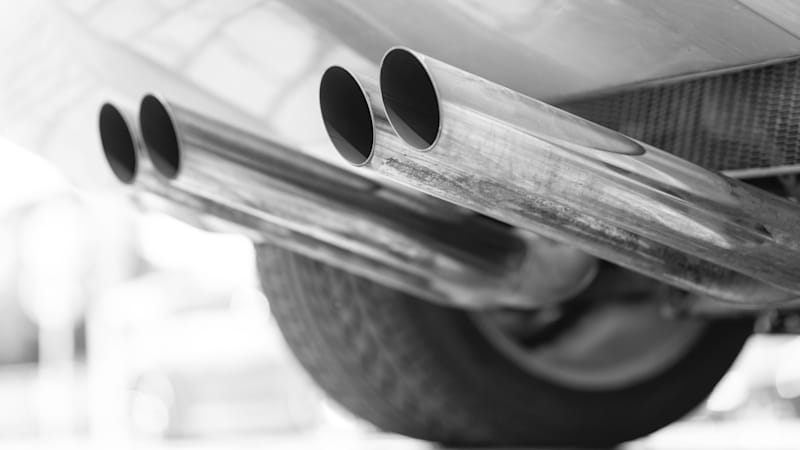What do an Egyptian statue in Manchester, a BP refinery in Azerbaijan and a BMW M3 in New York City have in common? They all had their sound or vibration level measured by detection equipment from the English company Intelligent Instruments. The situations in Manchester and Azerbaijan came to happy conclusions. The issue of the M3 is ongoing and probably won’t be good news for its owner. The Details: Road & Track stumbled upon a post on Lowered Congress’s Facebook page devoted to “the sexiest and coolest lowered vehicles in and around New York City.” The post was a photo of a second subpoena to the M3 owner, reading in part, “[Y]our vehicle has been identified with a muffler that does not comply with section 386 of the Vehicle and Traffic Act, which prohibits excessive noise from motor vehicles. Your vehicle is captured by a camera that takes a picture of the vehicle and its license plate. In addition, a sound meter records the decibel level as the vehicle approaches and passes the camera.”
That camera came from Intelligent Instruments, which appears to be a division of the company 24 Acoustics, which describes itself as “a multidisciplinary acoustic consultancy that provides a high-quality and professional engineering noise consultancy.” Last October, company director Dave Coles explained the $25,000 camera to WATE ABC in Knoxville, Tennessee, saying, “The noise camera system is a Class 1 precision sound level meter at its heart, with a pair of high-resolution cameras plugged in. It measures video and audio and sound levels all the time it waits for a noisy vehicle and when it detects one it captures video audio and sound levels and uploads everything to a web server where someone can judge and judge if it is good or not.”
The deployment of cameras in New York is a pilot program run by the state’s Department of Environmental Protection (DEP) that began last September and will run through June 30 of this year and is under review. In response to inquiries from R&T, the NY DEP confirmed that the system is in operation at the site where the M3 is recorded.
We’re not sure if the system in NYC puts a human in the ticket issuing protocol chain, but there are humans in the compliance chain. The M3 owner was ordered to appear at a wastewater treatment plant in Brooklyn for noise testing. According to the subpoena pictured, if the owner does so — after failing to respond to the initial DEP notice — the owner will be given “an opportunity to bring the vehicle into compliance with city and state law.” If the owner doesn’t show up a second time, another subpoena will come “with a maximum fine of $875.”
The DEP site explains, “The Department of Environmental Protection (DEP) and the Police Department (NYPD) share duties to enforce the noise code.” The DEP told R&T that this pilot program is separate from the recent vehicular noise legislation signed by Governor Kathy Hochul last year called the Stop Loud and Excessive Exhaust Pollution (SLEEP) Act. Draft legislation had attempted to define “excessive or unusual” exhaust noise as greater than 60 dB for cars and 95 dB for motorcycles, but ultimately stuck with “excessive and unusual”. The vague but enforceable provision includes fines up to $1,000, the highest in the country, and senators hoped to get decibel readers on every vehicle used by police and sheriffs.
The New York City rulebook reclassified the noise code in December 2005, calling any vehicle under 10,000 pounds too noisy if the exhaust is “clearly audible from 150 feet or more,” and for motorcycles, 200 feet or more. But even though this is happening in NYC, we believe the DEP is working on Section 386 of the New York State Vehicle and Traffic Law, which will set the allowable dB limit for cars at 76 dB below 35 miles per hour, 82 dB above 35 mph. For motorcycles, that’s 82 dB below 35 mph, 86 dB above 35 mph.
Last November, the DEP passed a new measure to impose Section 386 violations, which are enshrined in the New York City Rules Title 15, Chapter 47. The three-tier penalty schedule and standard penalties — the latter being for the no show when needed – get four figures quickly, starting at $220 as a penalty for a first offense and up to $1,575 for failing to show up on a subpoena after the third offense.
Before anyone starts with “It’s those big city politicians!”, know that this is also headed inland. The aforementioned Knoxville installs a single Intelligent Instruments camera at a downtown intersection “for a test drive at no cost to the city.”
Related video:
